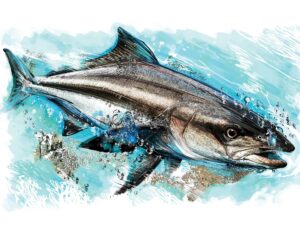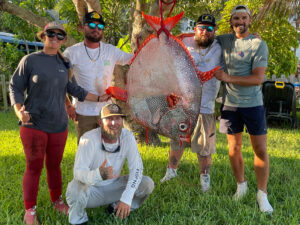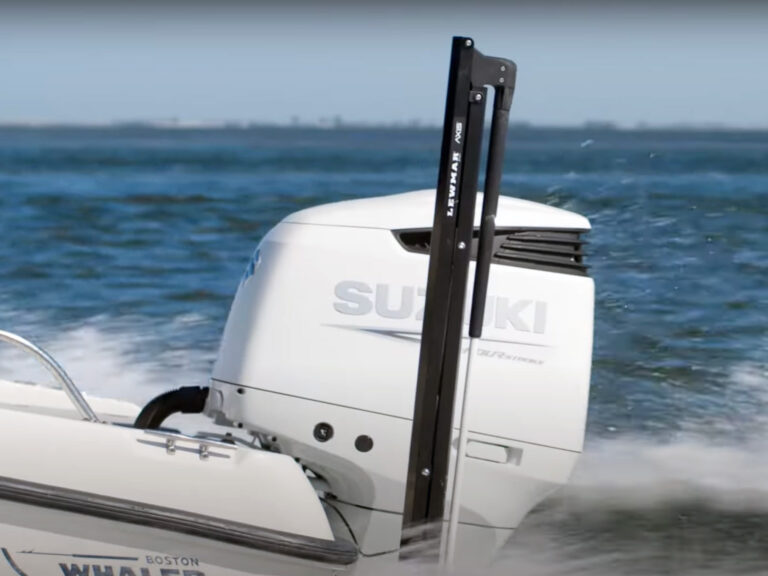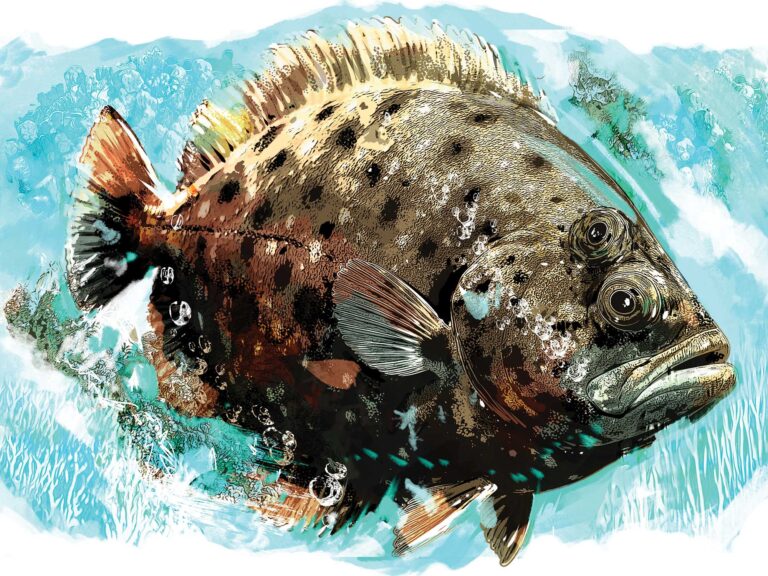
Fighting belts have come a long way in the decades since Ruff ’n Ready sold its popular model-139 lightweight belt. That belt—along with other similar stand-up fighting belts—was small and made of leather. It relied on a narrow 1-inch-wide leather strap, and its metal-frame-and-prong buckle was awkward and time-consuming to attach, and the belt stretched when wet. Heavy stitching and rivets held together the faceplate of these fighting belts, made of -double-layered leather. And the rod-butt pocket, also doubled leather, was stitched to the faceplate.
Fast forward to 2020, when modern fighting belts are now constructed with a faceplate of wide aluminum, carbon fiber or ABS plastic, and boast a comfort-padded EVA or gel backside. Straps—typically 2-inch-wide high-grade-nylon webbing—feature heavy-duty, quick-connect plastic buckles. All this makes them not only comfortable, but also their ergonomic design distributes heavy rod pressure away from the abdomen and onto the angler’s hips and thighs.
The many choices in light-duty fighting belts today mean many variations in design and materials. Which is your best bet?
What is a Light-Duty Belt?
Experts might define a light-duty fighting belt as one without a harness, and suitable for tackle no more than 80-pound-class and 30 pounds of drag. It may have a gimbal or just a pocket—with or without a pin—for the rod butt. Today’s “light” belts, however, are capable of handling significant amounts of fighting power and pressure displacement, and pros sometimes match them to extreme tackle such as the heavy popping spin rods for tuna or giant trevally as reviewed in last month’s Gear Guide.

According to Greg Stotesbury, recently retired sales manager, Tackle Division at AFTCO, an example of a light-duty belt is AFTCO’s AFB-3 Alijos, a good “day belt” for stand-up tussles with sailfish, dolphin, kingfish, small tuna, yellowtail and similar gamefish. “It’s light enough to wear all day on the boat,” Stotesbury says, “but it’s also easy to put on or take off at a moment’s notice.”
In general, Stotesbury believes that a lightweight belt should be standard gear in an angler’s boat bag, and readily handy when using 12- to 30-pound conventional tackle, medium-weight spinning gear, or jigging and popping outfits used for sport fish in the 20- to 80-pound range.
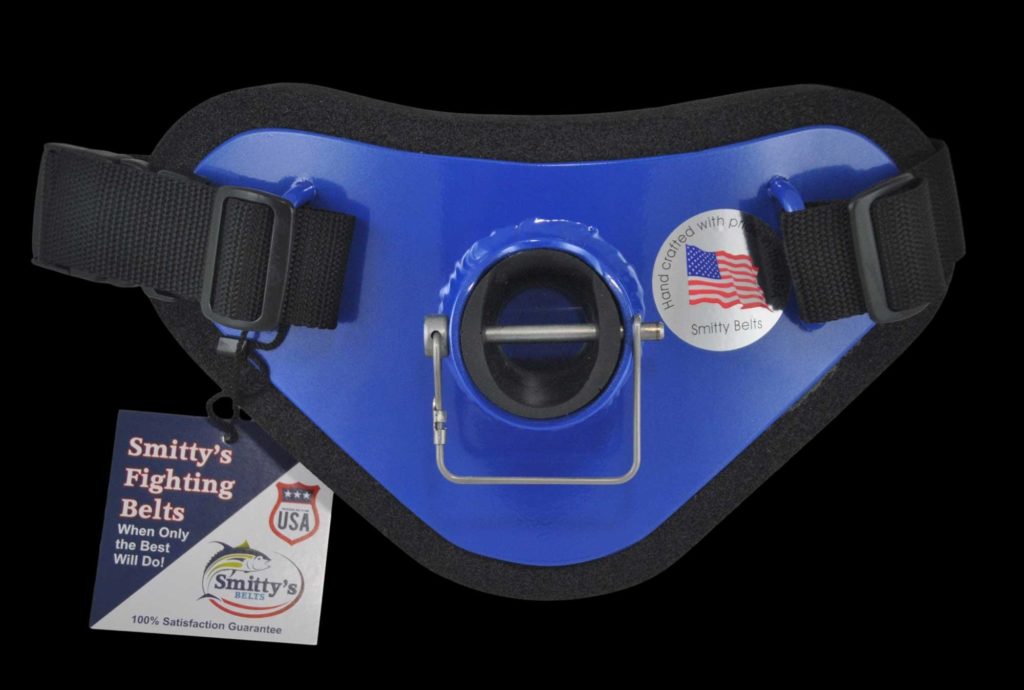
Capt. Jack Sprengel of East Coast Charters RI, who has traveled the world pursuing trophy gamefish, says that since the advent of braided-line -systems and construction of rods and reels using high-tech alloys, fibers and resins, many light-duty belts are now designed for significant lifting. Sprengel targets large pelagic species using heavy spin outfits, high-test braid and high drag settings, which create extreme loads on fighting belts. “This new standard of gear performance and durability,” he says, “presents some unique considerations when looking for the right belt, and can blur the lines of what once defined the difference between ‘heavy’ and ‘light’ duty.”
The Benefits of Belts
Anglers don a belt for two basic purposes: first, to protect their body from the concentrated pressure transferred to the rod butt during a fight. Second, it assists the fight by allowing the angler additional physical or mechanical advantage. By distributing pressure evenly over a wide area, a belt prevents pain or injury and it’s a fulcrum point for the rod, both key components in subduing powerful predators.
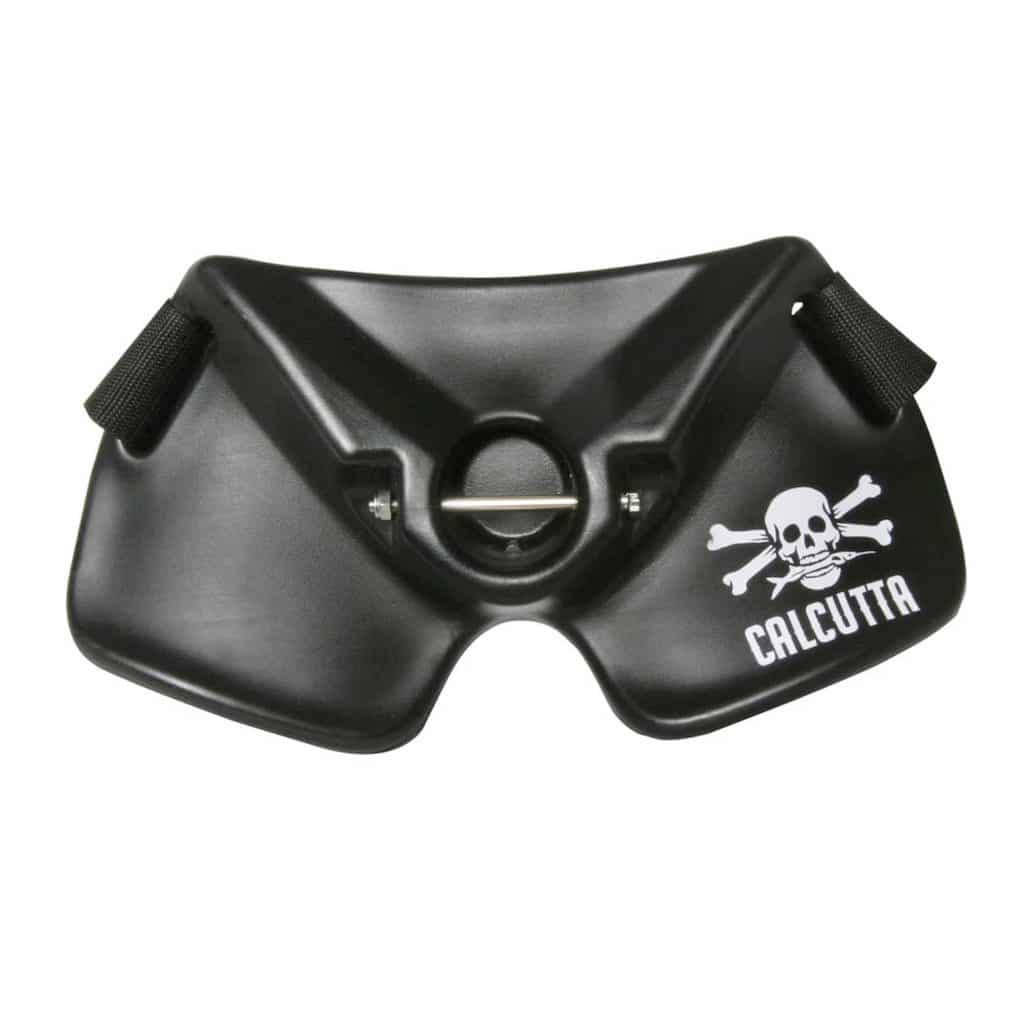
Chris Pardue, manager of product development at Calcutta, adds that belts such as Calcutta’s CFB-15 Fighting Belt, a 15-inch model with removable pin, make fighting a fish more comfortable, therefore helping you endure a long battle. “You don’t have the butt digging into your skin,” he says, “and it allows you to center the rod on your body and not place all the pressure on one side as you would without a belt.”
How to Choose a Belt
To select the right light-duty belt, consider three major factors, according to Sprengel: the physical capabilities of the angler, the nature and size of the target species, and the type of tackle.
Can the angler handle the combined weight of the gear and the target species? If so, then there are more benefits to using a pocket-type belt with a butt-cap-style rod, which will evenly spread the pressure and allow the angler freedom of rod maneuverability. Sprengel says this approach simply uses “a weight-displacing plate that’s quickly adjusted to fit the individual during the fight via a Velcro-style belt.
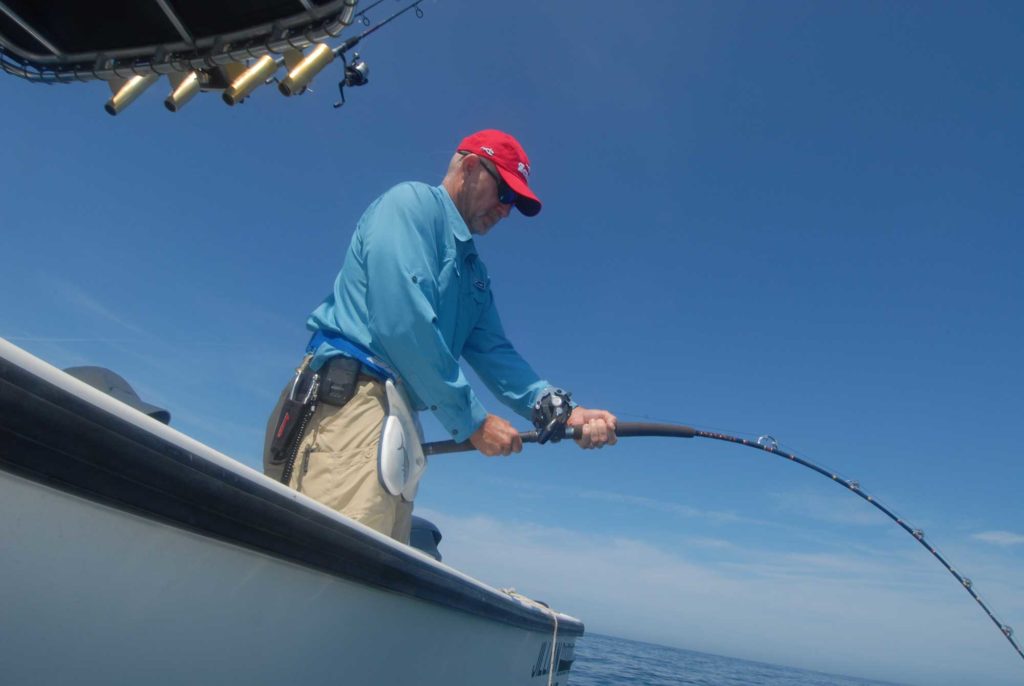
“An experienced angler,” Sprengel continues, “is then able to make drastic, irregular rod-tip motions, such as swinging side to side, to adjust to an erratically fighting fish, for example, to keep it out of the props. This freedom of movement can prevent fish loss, abraded line and thrown hooks.”
The other belt style consists of a plate with a gimbal cup matched to rod size or gimbal pin, depending on the butt of the rod. While this type offers protection, it also stabilizes the rod and reel from rolling or twisting during the fight. “The downside to this style of belt,” Sprengel says, “is that it restricts the range of motion of the rod during the fight, which can limit the angler’s options in a battle with erratic, aggressive species. The belt provides minimal physical advantage aside from rod stabilization and distributing weight onto the angler’s thighs in the high-stick resting position.”
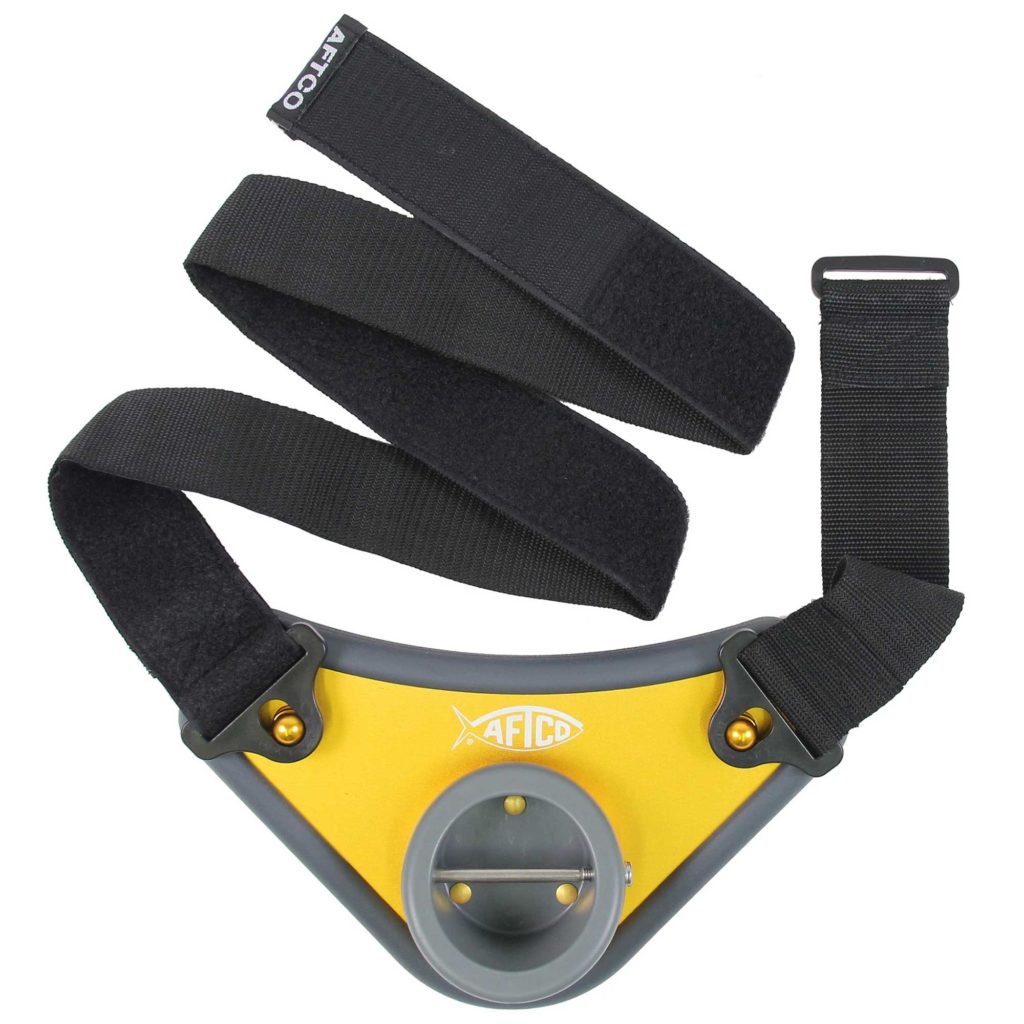
According to Randy Chin, CEO of Temple Reef rods, belts with a fixed gimbal pin were the standard for a long time. “These days,” Chin says, “most light belts either don’t come with a gimbal pin or have a removable pin, especially for casting, because we use big spinning reels, and the gravity load from the reel”—positioned below the rod—“negates any torsional movement common with overhead conventional reels, which require a pin to keep the rod straight. Sticking a rod butt into a belt without a gimbal pin is much easier and faster. If you’re casting to species like giant trevally or tuna, look for a belt with a deeply recessed pocket and no pin.”
Qualities of a Good Fighting Belt
An important feature of a good belt, notes Mason Featherston, USA sales manager at Alutecnos, is an ergonomic design that won’t squeeze your abdomen while fighting a fish. The Alutecnos Feather Belt, for example, features a comfortable design, and uses 6082 aluminum and 316-stainless-steel bolts and screws in its construction. He adds that the pad is replaceable to allow a fresh look after years of use, and -aluminum lasts a lifetime.

“The key features of lightweight fighting belts,” Sprengel says, “are rugged construction, easy and efficient deployment, and adjustability. Belts might need to be strapped on fast or switched from one person to another in a hurry, so versatility is a must.”
Avoid fighting belts with small front plates: They’re uncomfortable during the fight, subject to flipping or allowing the rod butt to pop out under vertical load, and offer little protection or efficiency. Look for large plates constructed of aluminum or carbon fiber and cushioned on the back with EVA, gel or some equivalent padding.

Sprengel concludes: “Purchase belts with the ability to remove or install the locking pin to allow for a variety of gear use, which won’t limit your tackle or species options.”



